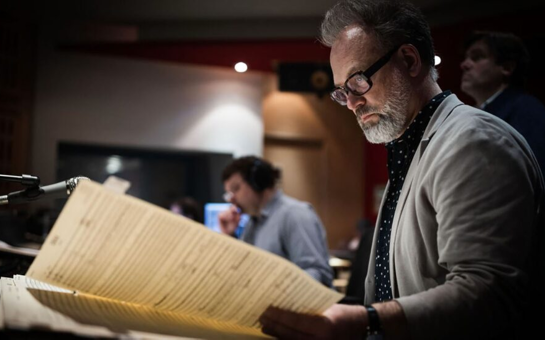- Joby Talbot
Path of Miracles (2005)
- Chester Music Ltd (World)
Commissioned by Tenebrae
- perc
- SSSSSAAAATTTTBBBB
- 1 hr
- Robert Dickinson
- English
Programme Note
Path of Miracles is a musical pilgrimage that has been three and a half years in the making. After Gabriel Crouch had told me of his and Nigel Short's ideas for a new piece about the mediaeval pilgrimage to Santiago de Compostella, I was taken to a Tenebrae recording session at the Temple Church, where I was utterly bowled over by the sheer beauty of the sound of this unique choir. A trip to northern Spain with my wife Claire and one-year-old son Maurice followed, and over ten magical days (and one distinctly unmagical car crash) we visited many of the important points of the Camino, including four of its greatest churches: the abbey at Roncesvalles in the foothills of the Pyrenees, and the great cathedrals of Burgos, Leon and Santiago itself. The impressions these places left on me became the basis for the musical structure of the work.
Back in England I managed, with the help of The Poetry Society, to track down Robert Dickinson, whose poem 'Proofs' about mediaeval French saints I'd read some five years previously. He seemed to me the ideal man for the job and so it proved, as he constructed a libretto of inspired reflections on the pilgrimage juxtaposed with extant mediaeval texts. In sourcing the latter, Professor Jack Sage of King's College, London was an invaluable help.
Path of Miracles is dedicated to the memory of my father, Vincent Talbot, 1916-2005.
Back in England I managed, with the help of The Poetry Society, to track down Robert Dickinson, whose poem 'Proofs' about mediaeval French saints I'd read some five years previously. He seemed to me the ideal man for the job and so it proved, as he constructed a libretto of inspired reflections on the pilgrimage juxtaposed with extant mediaeval texts. In sourcing the latter, Professor Jack Sage of King's College, London was an invaluable help.
Path of Miracles is dedicated to the memory of my father, Vincent Talbot, 1916-2005.
Media
Path of Miracles: Path of Miracles: I. Roncesvalles
Path of Miracles: Path of Miracles: II. Burgos
Path of Miracles: Path of Miracles: III. Leon
Path of Miracles: Path of Miracles: IV. Santiago
Scores
Preview the score
Features

- The Choral Music of Joby Talbot
- Music by Joby Talbot spans many genres from ballet, opera, concert pieces and work for film and television. His choral music is renowned for its originality. The iconic and impactful piece Path of Miracles made a lasting mark on the international choral scene.
Reviews
Discography
More Info

- Musical Adventures in Texas with Joby Talbot
- 16th September 2025
- The world premieres of Alice's Adventures in Wonderland: Suite and Piedra de Sol by Joby Talbot take place in Texas this September

 Located in the UK
Located in the UK
 Located in the USA
Located in the USA
 Located in Europe
Located in Europe